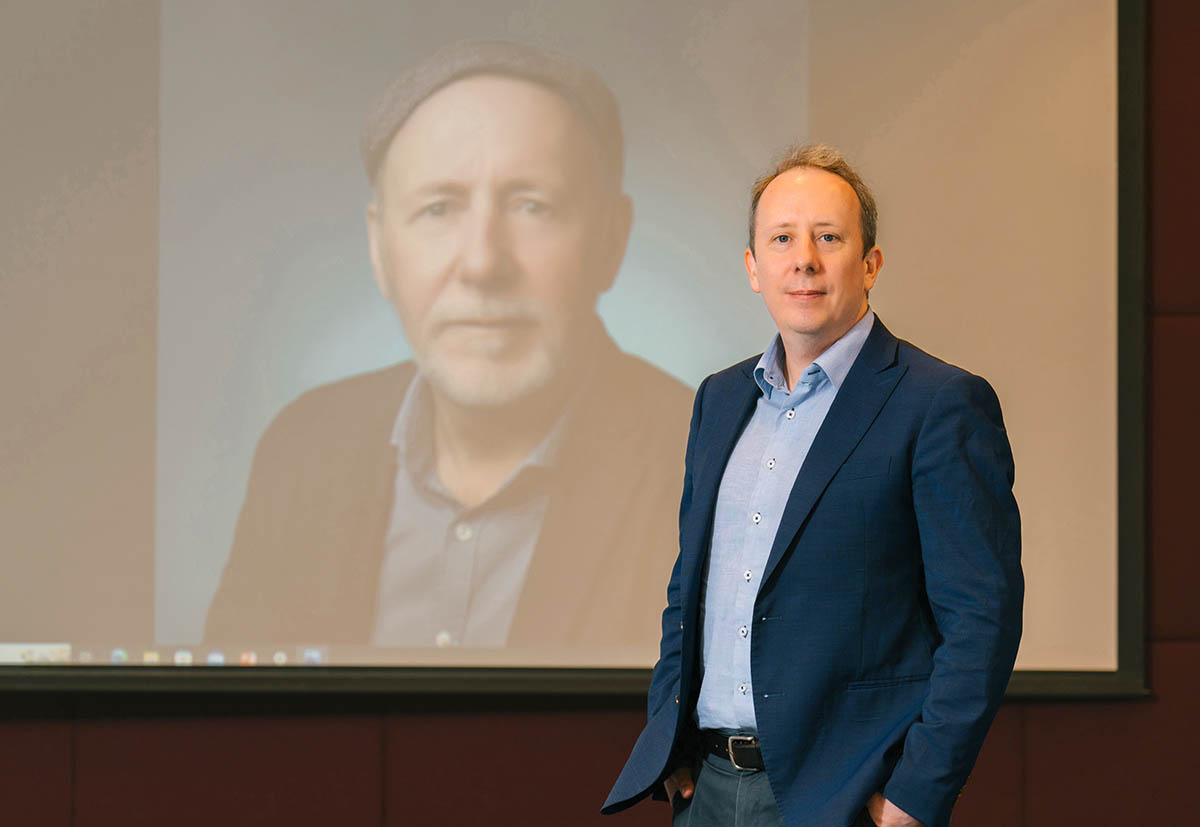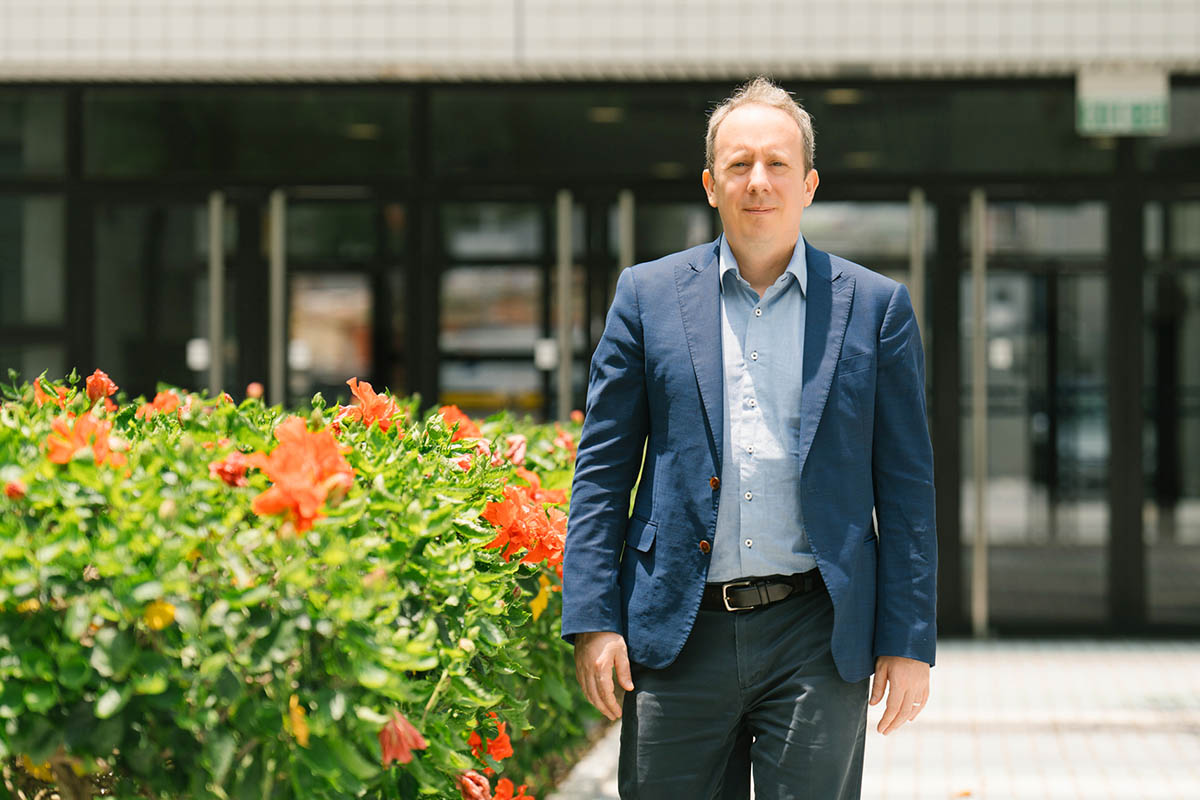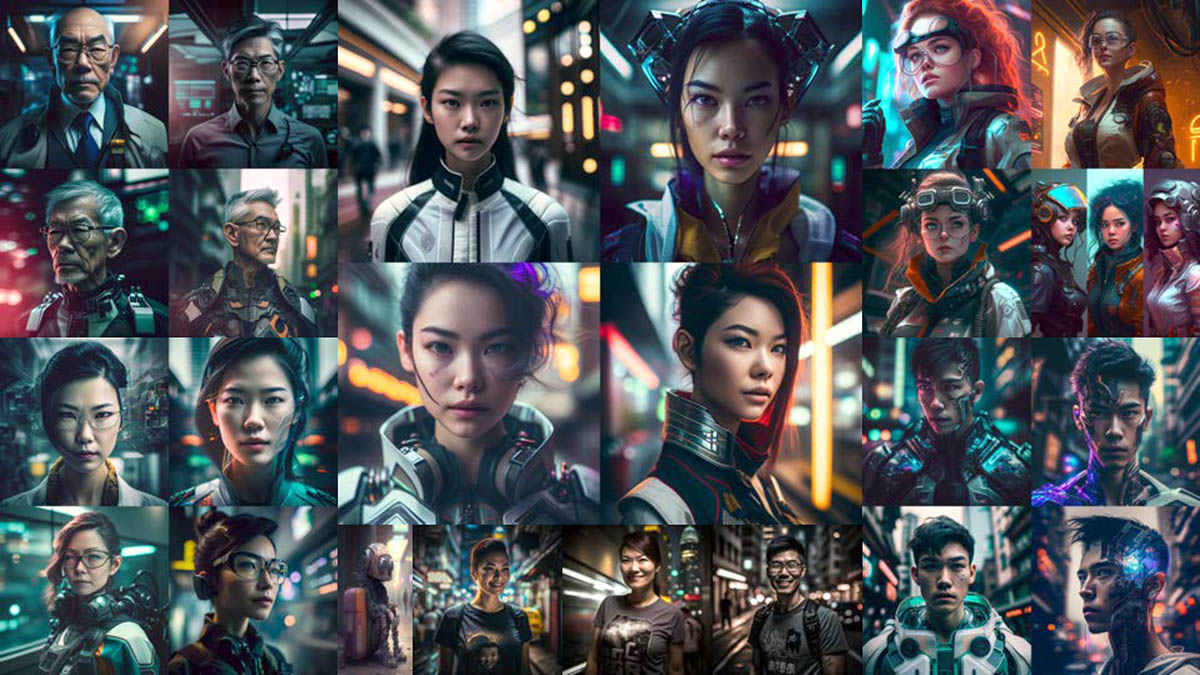

Dr. Sean McMinn is helping HKUST balance the fundamentals of education with the advances of artificial intelligence (AI).
AI is the talk of the town, and Dr. Sean McMinn, Director of the Center for Education Innovation (CEI), has been guiding HKUST to take a measured approach that benefits staff and students – balancing opportunities and risks of programs such as ChatGPT. The generative artificial intelligence tool, and other programs, are giving educators food for thought, and are changing the landscape. “AI has been on our radar for some time, particularly in language education, but now it’s become more advanced and that brings with it a range of complexities,” he says. In the media, many focus on the potential for Chat GPT to help students cheat, but this is “just the tip of the iceberg,” Dr. McMinn says.
Dr. McMinn, a Canadian native and former journalist, has close to two decades in applying technology in education, having started at HKUST in 2005 (including a stint away from the University). His experiences allow him to see the complexity of dealing with AI in a university. “We should look beyond this simplistic vision to embrace a holistic view of AI’s potential. Chasing plagiarism is a race we can’t win, and we do a disservice to our students because we should examine how it can enhance and transform teaching and learning,” he adds.

The game changer
One area which is of interest is human-AI collaboration for assessment and providing feedback to students. “We need to rethink what we teach, because when students go out to the working world new skills will be required,” he says. As AI begins to impact the workforce, students will find themselves graduating into an even more competitive environment. “Having said this, AI is not good at making decisions, understanding technical and emotional awareness, or even meta-cognition,” says Dr. McMinn.
There is a consensus that jobs including paralegal work, copywriting or advanced manufacturing, will be heavily automated and hence disrupted. AI should hence be incorporated into course design, and focus placed on creativity, problem solving and adaptability, rather than knowledge retention and creation. “We are trying to help faculty members see if they can redesign their assessments, and their processes, and use generative AI to access knowledge and learning,” he says.
A concern for educators is knowing if students are ultimately learning the content from courses. They must be trained in the proper use of AI, rather than just submitting questions and taking the answers without critically looking at the task at hand, and internalizing the knowledge. “As teachers, students should not be simply relying on technology,” Dr. McMinn says.

Ethics and bias in the mix
A key issue to grapple with is the ethical implications of using ChatGPT within education. There are a number of flaws within the tools, many of which are subtle. The concept of ‘latent persuasion’ for example, means people are being pushed to conceptualize subjects and understand them with inherent biases. “We might not even know this is happening, and the majority of our students are not trained in AI, so there is a danger of cultural hegemony, especially as the databases are from commercial entities,” says Dr. McMinn.
To grapple with these not insignificant challenges, CEI at HKUST has set up a taskforce in AI, identifying which courses could be geared towards critical thinking in this new learning context. Advances in technology have added to a rather busy set of responsibilities for Dr. McMinn, which includes blended and experiential learning, virtual reality and the metaverse, along with anything that enhances teaching and learning. His role includes formulating guidance for faculty members on course enhancement, workshops for teachers, and managing funds for faculty members to improve courses. Already, progress is being made within Business and Engineering in particular, to generate case studies and promote design-based thinking.

Placing AI into the education mix
HKUST now has an educational generative AI fund, with a call to faculty members to improve their courses with AI. For Dr. McMinn, an exciting development could be increased use of augmented reality (AR), with wide ranging applications from guiding students within a laboratory to helping them grapple with the dashboard of an airplane, among countless other learning scenarios.
Combined with AI, students could be immersed within AR, virtual reality and metaverses to help them learn tasks that are dangerous, or impossible to recreate in the physical world. “This will require so much equipment that it will be a slower process to integrate into the classroom than the likes of ChatGPT and AI which are available to students now,” says Dr. McMinn.
Compared to many universities that are keeping their heads in the sand, HKUST is powering forward, staying true to the ‘T’ in its name that stands for ‘Technology’. “We see emerging technology will impact teaching, so it makes sense for us to at least be able to assess the impact and plan for the future. Most people recognize AI can enhance teaching, and want to integrate it into learning.”
